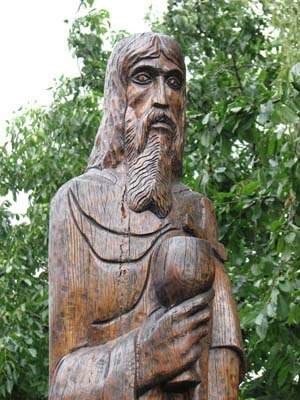The History of Mád
 Mád is one of the settlements in the Tokaj Wine Region with great history and special features. Its history became known in the period of the Hungarian Conquest. The Kabars who arrived with the Hungarians and settled here brought their winemaking knowledge. It is probable that this met the viticulture and viniculture of the Avars who were living here.
Mád is one of the settlements in the Tokaj Wine Region with great history and special features. Its history became known in the period of the Hungarian Conquest. The Kabars who arrived with the Hungarians and settled here brought their winemaking knowledge. It is probable that this met the viticulture and viniculture of the Avars who were living here.
Written sources from the 11th and 12th centuries record vineyards and cellars in church and royal ownership. The name Mád first appears in 1255, related to a case of ownership linked to the Sárospatak Erdőispánság (administratively independent royal estate).
The Mongol invasion caused great devastation in the region. The significant losses in population were replaced by the Árpád-House kings and the Aba clan who settled new peoples here. Later the Anjou monarchs and Zemplén aristocrats brought Italians and French settlers from Western Europe and Saxons from Szepes County (today Slovakia). The new arrivals also brought with them their knowledge of grape cultivation and winemaking.
The locals and new arrivals took control of nature. They cleared significant areas of forest around Mád and started to plant vines in the lands reclaimed from nature. It is probable that the first Mád vineyards date from this period, e.g. the forerunners of Király, Kővágó, Szent Tamás and Úrágya.
In the 14th century significant economic development began in the wine region the main motor of which was winemaking in Mád. The papal tithes created between 1331 and 1335 record that at the time the settlement already had a church and presbytery.
A royal estate in the early Middle Ages, Mád later passed to the Debrey branch of the Aba clan. At the turn of the 14-15th centuries the family conspired against Sigismund of Luxembourg who thus drove them out of the Tállya castle. The estates of the conspirators were later owned by the Hunyadi family. King Matthias Hunyadi (1458−1490) gave the body of the estate, which also included Bodrogkeresztúr, Ond, Rátka, Tállya, Tarcal and Tokaj, to his supporters, the Szapolyai family. They divided the Tokaj-Tállya estate around 1470, and thus Mád became part of the Tállya property.
From the 1460s a significant number of vinedresser families arrived in the Tokaj Wine Region from Syrmia (today Serbia), then a first-class wine region. They left their land because the Ottoman troops regularly raided their homes in the wine region on the southern border. At that time the wine merchants of the royal free cities recognised that not only the quality of the wine competed with that of Syrmia, but that it also proved more profitable. So these cities started to trade in Tokaji wines, and from 1469 councils and citizens in the more astute towns in Upper Hungary began to buy more and larger vineyards. In Mád it was mainly burghers of Kassa, Rozsnyó and Szpesi (today Košice, Rožňava and Moldava nad Bodvou, Slovakia) who created vineyard estates.
After the Battle of Mohács in 1526 the Alaghy family received the lordship. The head of the family became the landlord of Mád, and the Tállya estate was joined with the Regéc lands he had procured earlier. In 1580 representatives from the wine-producing settlements, market towns and estate owners from further afield met here to regulate grape production, vineyard ownership and the sales and purchase thereof. These rules were documented, and they became known as the Mád-Tállya laws. Later, based on this regulation, the Tokaj Wine Region was declared the first wine appellation in the world.
After the Alaghy family died out, Emperor and King Ferdinand II (1618−1637) gifted the estate to Ruling Prince of Transylvania György I Rákóczi (1593−1648) and Lord Chief Justice Count Pál Rákóczi (1596−1636). The two Rákóczi brothers had already inherited extensive vineyard estates from their father. The princely branch of the family nearly lost their vineyard estates when Ruling Prince Ferenc I Rákóczi (1645−1676) participated in the anti-Habsburg Wesselényi Conspiracy (1664−1670). In the end they managed to pay an enormous ransom and pawned their vineyard estates to avoid the royal court.
After the Peace of Szatmár which closed the War of Independence in 1711, the Habsburgs sequestered the family estates, and so the settlement received new landlords. Smaller noble estate owners went bankrupt because of the poor vintages and sold their vineyards to more astute aristocratic families. These families created ever larger properties in the settlement, partly through marriage, partly through inheritance and marriage. Thus, these aristocratic families became the most influential landowners in Mád in the 18th and 19th centuries.
In the second half of the 18th century many Jewish inhabitants arrived from Galicia (Halychyna, present day Ukraine/Poland) and Podolia (today Ukraine and Moldova) and settled in the region. The aristocrats here saw great economic potential in the new arrivals and made use of their trade expertise to sell the wines. Using their existing trade relations, the merchants successfully sold the wines made here all over Europe. By the end of the 18th century the Jewish community in Mád had strengthened to such an extent that it had its own congregation with a synagogue and a school.
Deep scars were left on the region in the 20th century by the two world wars, the trauma of the Treaty of Trianon, the Communist takeover and the subsequent nationalisation. The aristocrats and nobles were driven out, the Jewish inhabitants deported and their lands confiscated. Russian-model kolkhoz collective producers associations were introduced. Quality production was replaced by the approach that provided quantity to serve less demanding markets. This production structure lasted until the change in political system in the early 1990s when compensation started, private estates began to develop and top international figures in the wine world appeared. Since 2000 dry wines of ever higher quality have been made here too. The strengthening and dynamic development of the wineries shows that a new era has begun in the history of the wine region and Mád.
Updated: 2019.06.03.


